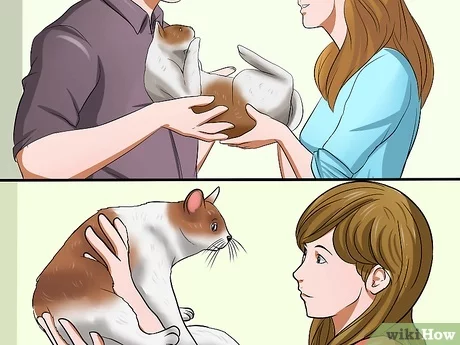
How to help homeless cats
Statistics There are no official statistics on the number of stray cats in Russia and Moscow – most animals in Russia are not chipped. However, experts believe that since 2012 the population has declined significantly due to the capture and mass sterilization of cats. The trapping-sterilization-vaccination-return program is not always successful, but it works in some regions of the Russian Federation. In January 2020, the Responsible Animal Care Act was officially passed, which will also reduce the number of stray animals over time.
How do cats get outside? How do cats become homeless? In most cases, kittens are already born on the street, but, unfortunately, there are situations when a domestic cat is kicked out or lost. The owners could move or for some other reason abandoned their pet. At first, former domestic cats are very easy to distinguish from feral ones – they often do not know how to get their own food on their own, they approach people and meow plaintively. It is these animals that suffer the most on the street. If a cat is lost in the summer, then it has very little chance of surviving until winter, especially in the suburbs, in summer cottages.
Unlike dogs, which are pack animals, cats rarely huddle in colonies and prefer to live apart from each other. Although you could see several cats and kittens near the entrance to the basement of your house at once. Homeless cats in basements are at least warm.
Homeless cats can be a danger to both people and pets. Street animals eat anything – they hunt rodents and birds, pick up leftovers near cafes and spoiled food from shops. The risk of infection with rabies, toxoplasmosis, panleukopenia and many parasitic diseases in feral cats is very high.
Most stray cats do not live to old age. They die from disease, starvation or injury – any animal can get hit by a car or be attacked by a pack of stray dogs.
How can you help? If you are concerned about the fate of homeless cats, you can help them in one of the following ways:
Your pet cat should be vaccinated, microchipped and spayed first, especially if she has access to the outdoors.
You can help shelters located in your city. Every shelter needs financial help. Additionally, you can buy and bring food, tray filler, toys and medicines to the shelter.
The shelters need volunteers. If you have time, you can start helping a nearby institution. Animals need periodic washing, grooming and constant attention.
Relief funds In Russia, there are several foundations and charitable organizations that help homeless animals. These organizations help animal shelters by organizing support ranging from spaying cats to actively helping new owners. Most foundations have photo galleries where you can see their puppies in advance. In many countries of the world, under the program Hill’s “Food.Home.Love”, as well as in collaboration with partners in the field of animal care (in Russia, the Animal Help Fund “Pick up a Friend” and the charity fund “Ray”), Hill’s provides free food for cats, which are cared for by shelter staff and volunteers.
Help is never too much. Maybe you will enjoy volunteering and become the best volunteer in your city.





